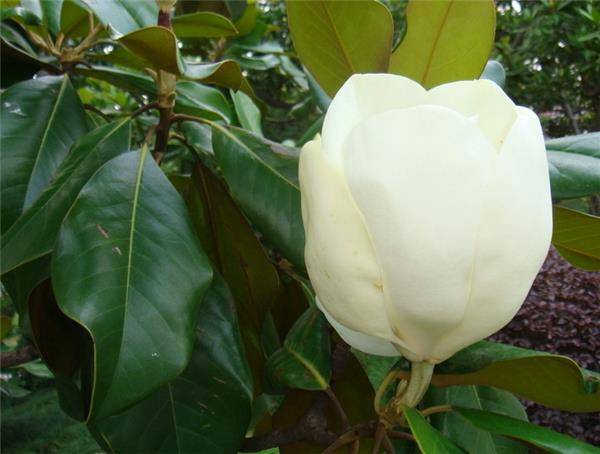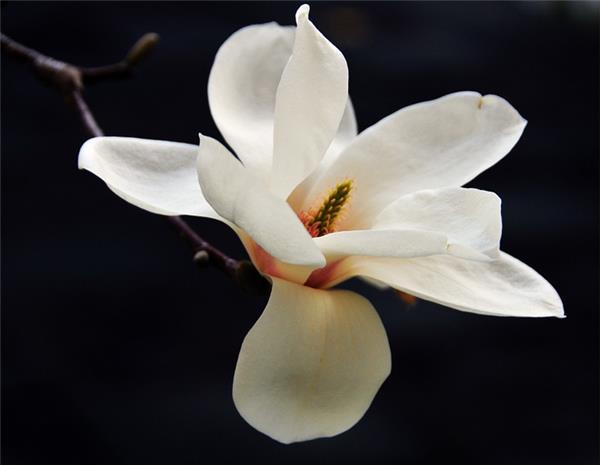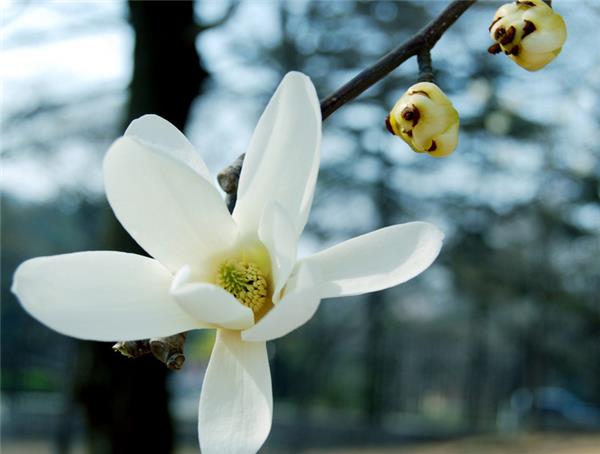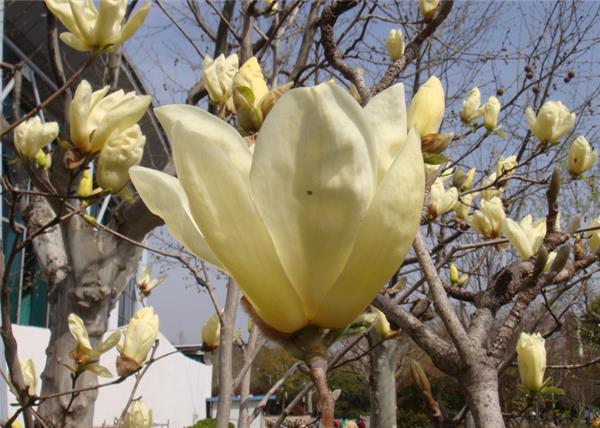The efficacy of Magnolia
Magnolia is a deciduous tree, beautiful tree shape, large flowers, blue white, fragrance like orchid, great ornamental value, is a common ornamental plant in the courtyard, the following introduces the efficacy of Magnolia magnolia.

The efficacy of Magnolia
First, it has medicinal value.
Root: urinary tract infection, adverse urination, carbuncle swelling. Leaf: clearing heat and diuresis; relieving cough and resolving phlegm. Main urinary tract infection; adverse urination; bronchitis. Flowers: dampness; invigorate qi; relieve cough. Main chest tightness and abdominal distension; heatstroke; cough; prostatitis; leucorrhea. Take 10 magnolia buds (those that will open or not open), fry them with water twice, remove the dregs and get the juice. Divide it into two portions and take it once in the morning and afternoon. This prescription is taken in the time and space of menstruation every month, mainly for the treatment of dysmenorrhea caused by cold coagulation and qi stagnation.
Second, it has edible value.
Mix with white magnolia petals, flour and sugar, then fry it into a fragrant and tender delicious snack. If the japonica rice in the pot boiled to porridge will become, put in the right amount of magnolia petals, Hawthorn, honey slightly boiled porridge, sweet and sour food, light and clear eyes. If the magnolia petals are washed and dried, rubbed with the same amount of white sugar and sealed in a bottle, it can be used as an ingredient for all kinds of health dessert stuffing or steamed cake.

Third, it has ornamental value.
Often used in gardens, communities, gardens, schools, institutions, factories, hillsides, courtyards, roadsides, in front of buildings. When in full bloom, the petals spread in all directions, making the courtyard blue and white, dazzling white light, with a high ornamental value; coupled with bursts of fragrance, refreshing.
Fourth, it has ecological value.
In the south with higher temperatures, it can blossom from December to January of the following year. Magnolia magnolia has strong resistance to harmful gases. If the flower is planted in a factory polluted by sulfur dioxide and chlorine, it has a certain resistance and the ability to absorb sulfur. Magnolia is light-loving, hardy and can survive the winter in the open field. Love high dryness, avoid low dampness, waterlogging is easy to rot roots. The sandy soil, which is fertile, well drained and slightly acidic, can also grow on weakly alkaline soil. In the south with higher temperatures, it can blossom from December to January of the following year. Magnolia has strong resistance to harmful gases. If the flower is planted in a factory polluted by sulfur dioxide and chlorine, it has a certain resistance and the ability to absorb sulfur. Artificial fumigation with sulfur dioxide, 1 kg dry leaves can absorb more than 1.6 grams of sulfur. Therefore, Magnolia is a good anti-pollution greening tree species in air pollution areas.

Propagation methods of Magnolia Magnolia
1. Seed propagation: it can be harvested in the early and middle of September when the fruit turns red and part of the fruit cracks to reveal red seeds. After threshing, full and bright seeds are selected for seed.
Soak the seeds in 50-60 ℃ warm water for 10 minutes, knead with fine sand, remove wax, sift out seeds, store them in leeward Xiangyang pit with 3 times wet sand, cover them with grass to keep warm and moisturize, and take out and sow seeds when about 50% of the seeds are cracked and exposed in the following spring. Autumn sowing can be broadcast on demand. At this time, the fresh seeds should be soaked in warm water with plant ash for 3-5 days, rub to water frequently, and sow after the seeds break.
The seedbed should be made into a high bed, 1.2 meters wide, 30 meters high and 30 meters wide. According to the row spacing of 20 meters, the horizontal trenching strip sowed 5 meters, the depth of the ditch was 6 meters, the soil was covered with 3 meters after sowing, the straw was covered, and the seedlings could be sown in early March and in the middle and last ten days of May. The seedlings can emerge after sowing in autumn for more than a month. After emergence, remove the mulch in time, cut branches and shade, and often water, maintain a humid environment, strengthen management, weed removal and topdressing, and can be planted after two years of cultivation.
2. Ramet propagation: at the end of winter and the beginning of spring, the old plants with tillers are dug up with roots and planted as they are dug.
3. Striping method: in early spring, gently press the twigs of the mother tree near the ground into the soil, so that the soil cover is tightly forked and firmly forked, so that the branches grow out of tender roots and new branches on the ground. It can be planted in a year.

4. high-altitude striping method: in late June, young twigs were selected on the mother plant, and the branches were peeled off with a knife at the bifurcation, which was semi-orchard. Cover it with plastic film or bamboo tube, moist and fertile soil inside, tie it tightly with a rope, don't move, keep it moist. In late April of the following year, the new root was checked and the plant could be removed.
5. Cuttings: in summer and autumn, 1-2-year-old twigs are selected and cut into 15-20 cm long cuttings, the upper end is flattened, and the lower end is cut into horse ear shape. After wetting, 500ppm indole butyric acid and talcum powder are in fact inserted obliquely into the seedbed, leaving 2 nodes at the lower end and exposing one node on the ground. Build a shed for shade, keep the soil moist, and take root in about a month.
6. Grafting: seedlings propagated by seeds need to be cultivated for 7-8 years before they can bloom. It only takes 2-3 years for the grafted seedlings to blossom. The commonly used grafting methods are "bud grafting" and "cutting", which are the same as ordinary flowers and trees.
Two knots are left at the lower end, and one node is exposed on the ground. Build a shed for shade, keep the soil moist, and take root in about a month.
6. Grafting: seedlings propagated by seeds need to be cultivated for 7-8 years before they can bloom. It only takes 2-3 years for the grafted seedlings to blossom. The commonly used grafting methods are "bud grafting" and "cutting", which are the same as ordinary flowers and trees.
Related
- Wuhan Hospital Iron Tree Blooming Result Was Instantly Frightened by the Gardener Master
- Which variety of camellia is the most fragrant and best? Which one do you like best?
- What is the small blue coat, the breeding methods and matters needing attention of the succulent plant
- Dormancy time and maintenance management of succulent plants during dormancy
- Minas succulent how to raise, Minas succulent plant pictures
- What are the varieties of winter succulent plants
- How to raise succulent plants in twelve rolls? let's take a look at some experience of breeding twelve rolls.
- Attention should be paid to water control for succulent plants during dormant period (winter and summer)
- Watering experience of twelve rolls of succulent plants
- Techniques for fertilizing succulent plants. An article will let you know how to fertilize succulent plants.



